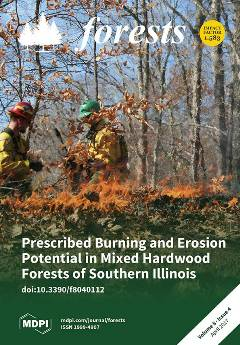Sustainable forest management requires a continuous assessment of the forest conditions covering the species distribution, standing tree volume as well as volume increment rates. Forest inventories are designed to record this information. They, in combination with ecosystem models, are the conceptual framework for
[...] Read more.
Sustainable forest management requires a continuous assessment of the forest conditions covering the species distribution, standing tree volume as well as volume increment rates. Forest inventories are designed to record this information. They, in combination with ecosystem models, are the conceptual framework for sustainable forest management. While such management systems are common in many countries, no forest inventory system and/or modeling tools for deriving forest growth information are available in Ethiopia. This study assesses, for the first time, timber volume, carbon, and Net Primary Production (NPP) of forested areas in the Amhara region of northwestern Ethiopia by combining (i) terrestrial inventory data, and (ii) land cover classification information. The inventory data were collected from five sites across the Amhara region (Ambober, Gelawdiwos, Katassi, Mahiberesilasse and Taragedam) covering three forest types: (i) forests, (ii) shrublands (exclosures) and (ii) woodlands. The data were recorded on 198 sample plots and cover diameter at breast height, tree height, and increment information. In order to extrapolate the local terrestrial inventory data to the whole Amhara region, a digital land cover map from the Amhara’s Bureau of Agriculture was simplified into (i) forest, (ii) shrubland, and (iii) woodland. In addition, the forest area is further stratified in five elevation classes. Our results suggest that the forest area in the Amhara region covers 2% of the total land area with an average volume stock of 65.7 m
3·ha
−1; the shrubland covers 27% and a volume stock of 3.7 m
3·ha
−1; and the woodland covers 6% and an average volume stock of 27.6 m
3·ha
−1. The corresponding annual volume increment rates are 3.0 m
3·ha
−1, for the forest area; 1.0 m
3·ha
−1, for the shrubland; and 1.2 m
3·ha
−1, for the woodland. The estimated current total volume stock in the Amhara region is 59 million m
3.
Full article





